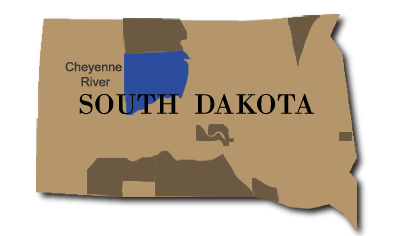|
|
 |

About the Cheyenne River Sioux: The Siouan language family, including Lakota-Dakota-Nakota speakers, inhabited over 100 million acres in the upper Mississippi Region in the 16th and early 17th centuries. Conflicts with the Cree and Chippewa, as well as the lure of the Great Plains’ buffalo herds, encouraged the Sioux to move farther west in the mid-17th century. The Lakota acquired horses around 1740 and crossed the Missouri River shortly after, arriving in the Black Hills in 1775. The Lakota are the archetypal Plains Indian. They lived in organized bands, warred and raided, and depended on buffalo for food and clothing.
History of the Reservation: The terms of the Fort Laramie Treaty of 1868 placed the Lakota on one large reservation that covered parts of North Dakota, South Dakota, and four other states. After defeating the Indian tribes during the Indian Wars of the 1870s, the United States created several smaller reservations. In 1889, the Cheyenne River Reservation was established. About one half of the Reservation was confiscated by the United States government. Then the damming of the Missouri River, started in 1948, submerged an additional 8 percent of the Reservation.
Life on the Reservation: Most of the 13 small communities on the Cheyenne River Reservation do not have water and sewer systems making if difficult to live in sanitary conditions. With few jobs available many tribal members have jobs and two-thirds of the population survives on much less than one-third the American average income. These dismal living conditions have contributed to feelings of hopelessness and despair among the youth. Indian Country Today reports than one in five girls on the Cheyenne River Reservation has contemplated suicide and more than one in ten have attempted it. How can I help?
Cheyenne River on the map: Perkins, Dewey, and Zieback counties, South Dakota.
Tribal enrollment: 5,000.  |
|
|
return to top
|
|
|
|

|



